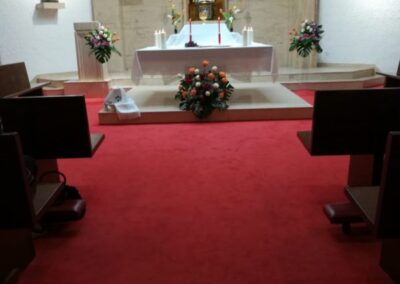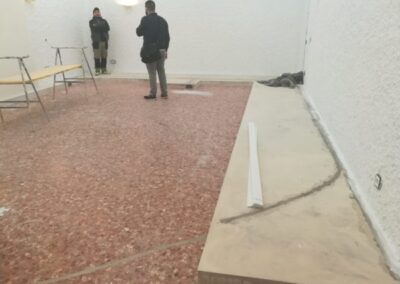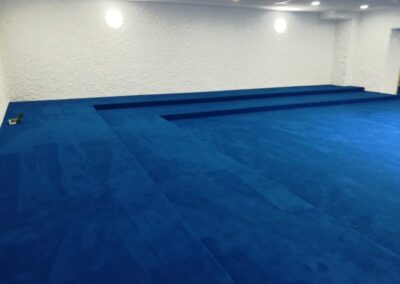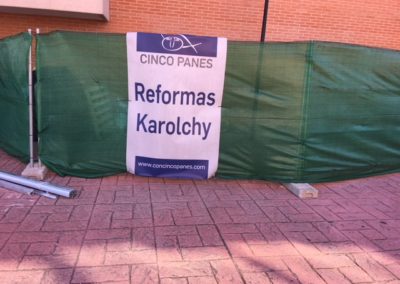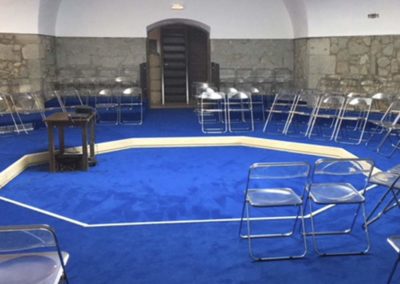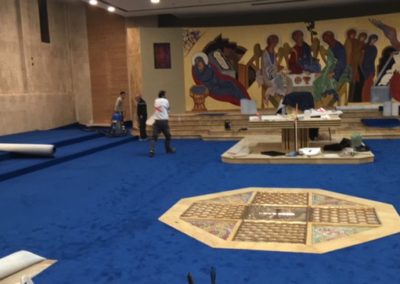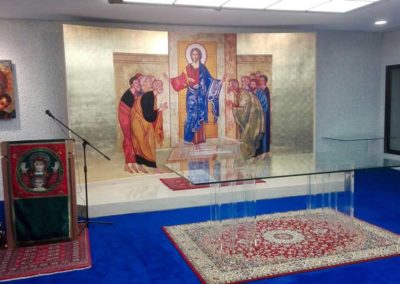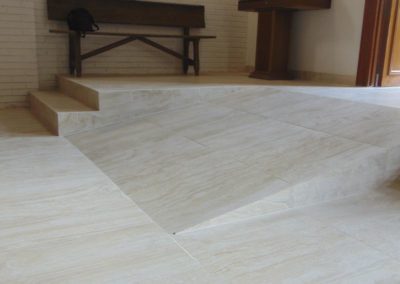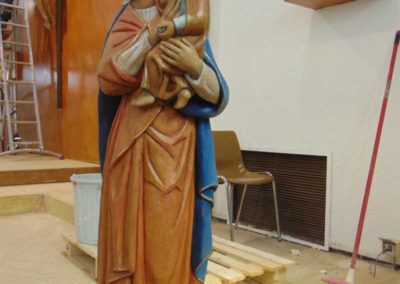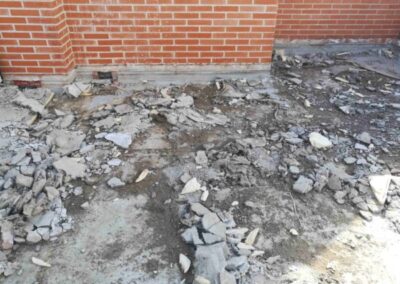ESTÉTICA PARA LA EVANGELIZACIÓN
En Cinco Panes contamos con una gran variedad de profesionales dentro de nuestra empresa, por eso es que tenemos el orgullo de ser una compañía que cada día crecemos en experiencia y ponemos en práctica todos los conocimientos adquiridos.
Trabaja mos con «N SPAZIO ARCHITETTI» una gran empresa de arquitectos,en la que su trabajo está encabezado por el arquitecto Francesco Rengo .
mos con «N SPAZIO ARCHITETTI» una gran empresa de arquitectos,en la que su trabajo está encabezado por el arquitecto Francesco Rengo .
https://www.facebook.com/architectural.studio.lab/
https://www.houzz.it/pro/nspazio/nspazio
http://nspazio.com/enter-nspazio/
Además contamos con un gran equipo de profesionales, que va desde Oficiales de moqueta, hasta Jefe de Obra con mas de 20 años de experiencia, formador técnico en pinturas, Oficiales electricistas especializados en instalaciones de luminarias, instaladores de Tarima, mármol y cerámicos, PVC…y un equipo profesional de trabajadores y colaboradores; hemos llevado acaba Reformas de tipo:
- Instalaciones de Luz-luminaria
- Muros para murales
- Tirolesa, pared rugosa
- Pintura
- Moqueta
- Suelos
- Reformas integrales de salas y templos
- iMPERMEABILIZACIONES
Nuestra labor, como Directores de Obra y asesores, nace del estudio de la Nueva estética propuesta por el Concilio y por Arquitectos, diseñadores ect.. que nos preceden.
Diseño de estética evangelizadora
Después de haber convertido, el pasar de los años, las iglesias en pinacotecas, llenas de altares, imágenes, y demás complementos, pero sin caer en el extremo protestante, por otra parte injustificado, de negar cualquier representación artística de la fe (al estilo de los musulmanes) el Concilio sentó unas bases en las que recuperaba la tradición más profunda de la fe, que, evidentemente, se desarrolla alrededor del misterio Eucarístico.
La Sacrosantum Concilium o la Lumen Gentium esbozan la nueva teología eclesial basada en la comunión, en la visión de la Iglesia como pueblo de Dios, Luz de las gentes, que se reúne, vive y celebra entorno al altar, del banquete pascual y del sacrificio de Cristo.


NOSOTROS
Desde un pequeño Equipo de Arquitecto, Director creativo, Jefe de obra y un equipo formidable de proveedores, CincoPanes, en nuestra línea de servicio a la Parroquia, economizando y proponiendo una estética mas evangelizadora, nos ofrecemos para realizar cualquier tipo de Reforma.
HISTORIA DE LA ESTÉTICA EVANGELIZADORA
En Pascua de 1920, Romano Guardini visitó por primera vez el castillo Rothenfels-am-Main, cerca de Würzburg, un edificio del siglo XII a orillas del río Mena. Desde el verano de 1919 era sede del movimiento juventil católico Quickborn (en bajo alemán: manantial de agua viva). Se convirtió en capellán y director espiritual del centro. Como tal, Guardini aportó profundidad teológica y fundamentación objetiva al estilo de vida que ya se practicaba en las comunidades del Quickborn. De hecho, en los años veinte escribe sus libros sobre la liturgia que reflejan su compromiso con estas comunidades: “El espíritu de la liturgia” (1918), “Formación litúrgica” (1923) y “Los signos sagrados” (1927).
En el marco de numerosas semanas de convivencia y de trabajo comunitario, Guardini y Schwarz comenzaron a modificar los espacios celebrativos tradicionales.
Romano Guardini se apoya básicamente en la esencia de la liturgia: el misterio pascual de la muerte y resurrección de Jesucristo. Consideraba la objetividad de la fiesta litúrgica y cómo ésta influye en la composición del espacio. La celebración de la Eucaristía y de la Palabra, vividos en régimen de pequeña comunidad, la participación activa de la asamblea en los gestos simbólicos y el canto, obligaban a cambios en el diseño y distribución de la sala.
Instituyeron así un canon que recuperaba elementos celebrativos de la Iglesia primitiva.
Esta nueva estética basada en la celebración comunitaria de la liturgia se expresaba sobre todo en la capilla y en la gran sala medieval llamada: “La sala de los caballeros” (Rittersaal). En esta sala, más grande que la capilla, se celebraba también a veces la Santa Misa; no deja de ser destacado que en esas ocasiones, ya en 1922, el celebrante se situaba cara al pueblo.
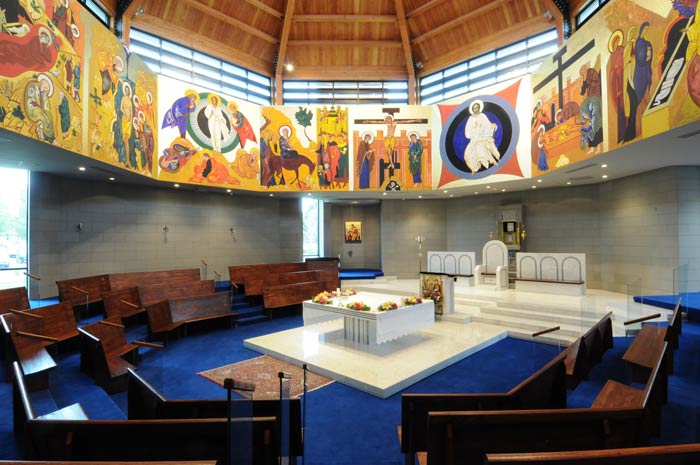
TRABAJOS REALIZADOS
Para más información pongase en contacto con nosotros
Construcción y reformas de centros religiosos
La construcción y reforma de centros religiosos es un proceso que requiere un enfoque cuidadoso y respetuoso, dado el significado espiritual de estos espacios. La planificación adecuada asegura que la estructura cumpla con las necesidades de la comunidad, al tiempo que refleja su identidad y valores.
Es fundamental considerar la acústica y la iluminación en el diseño de estos lugares. Un ambiente acogedor y propicio para la oración y la celebración de rituales es esencial para fomentar la participación de los fieles y el sentido de comunidad.
Las reformas deben incluir elementos de accesibilidad para garantizar que todas las personas, independientemente de sus capacidades, puedan disfrutar y participar en las actividades de la comunidad. Esto puede implicar la instalación de rampas, baños adaptados y espacios cómodos para el movimiento.
La utilización de materiales sostenibles en la construcción y reforma de centros religiosos no solo reduce el impacto ambiental, sino que también puede ser un reflejo de los valores de cuidado y respeto por la creación. Incorporar elementos naturales puede realzar la belleza del espacio sagrado.
Es esencial que el proceso de reforma sea participativo, involucrando a la comunidad en la toma de decisiones. Esto no solo fortalece los lazos comunitarios, sino que también asegura que el resultado final sea un espacio que realmente responda a las necesidades y deseos de quienes lo utilizan.

